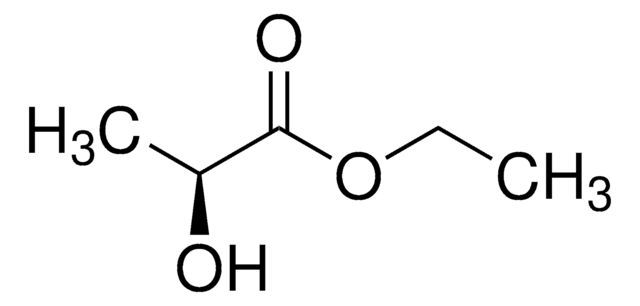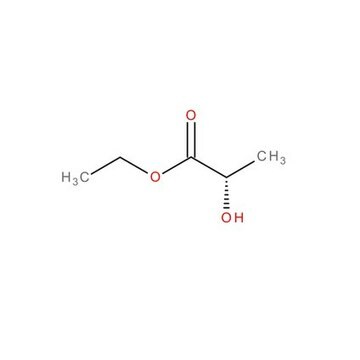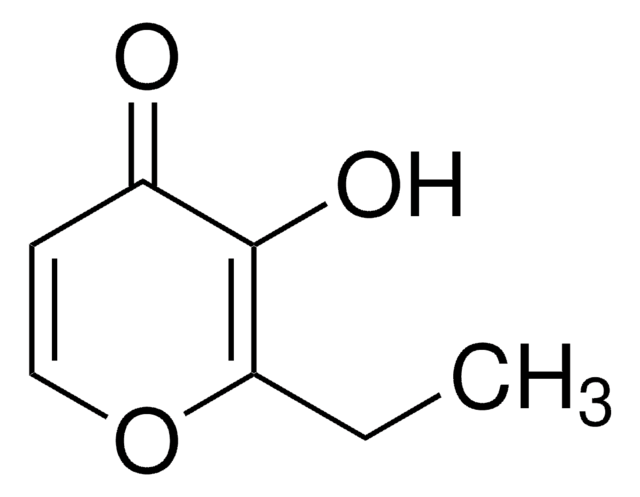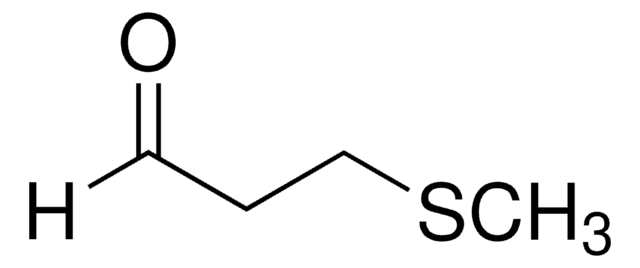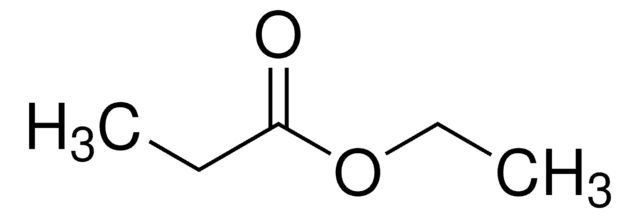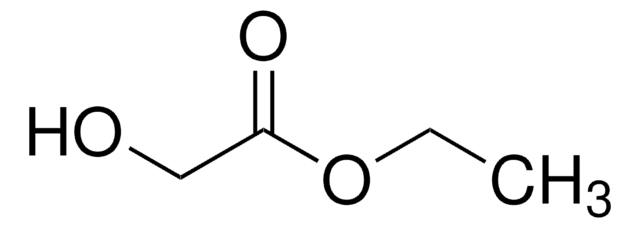W244007
Ethyl lactate
≥98%, FCC, FG
Synonym(s):
Ethyl 2-hydroxypropionate
About This Item
Fragrance grade
Halal
Kosher
meets purity specifications of JECFA
Recommended Products
biological source
synthetic
Quality Level
grade
FG
Fragrance grade
Halal
Kosher
Agency
follows IFRA guidelines
meets purity specifications of JECFA
reg. compliance
EU Regulation 1223/2009
EU Regulation 1334/2008 & 178/2002
FCC
FDA 21 CFR 117
FDA 21 CFR 172.515
Assay
≥98%
refractive index
n20/D 1.413 (lit.)
bp
154 °C (lit.)
density
1.031 g/mL at 25 °C (lit.)
application(s)
flavors and fragrances
Documentation
see Safety & Documentation for available documents
food allergen
no known allergens
fragrance allergen
no known allergens
Organoleptic
butter; fruity
SMILES string
CCOC(=O)C(C)O
InChI
1S/C5H10O3/c1-3-8-5(7)4(2)6/h4,6H,3H2,1-2H3
InChI key
LZCLXQDLBQLTDK-UHFFFAOYSA-N
Looking for similar products? Visit Product Comparison Guide
Related Categories
General description
Application
- Characterization of the differences in aroma-active compounds in strong-flavor Baijiu induced by bioaugmented Daqu using metabolomics and sensomics approaches.: This paper characterizes aroma-active compounds in strong-flavor Baijiu influenced by bioaugmented Daqu. Utilizing metabolomics and sensomics, the study highlights the role of ethyl lactate among other compounds in defining the beverage′s unique aroma profile (Mu et al., 2023).
- A sustainable application for the extraction of lichen metabolites from Usnea cornuta: nontargeted metabolomics and antioxidant activity.: This research presents a sustainable method for extracting lichen metabolites using ethyl lactate. The study applies nontargeted metabolomics to evaluate antioxidant activities, demonstrating the compound′s efficacy and environmental benefits in natural product extraction (Castañeta et al., 2023).
- Extraction of curcuminoids by using ethyl lactate and its optimisation by response surface methodology.: This article explores the use of ethyl lactate for extracting curcuminoids and optimizes the process using response surface methodology. The findings underscore ethyl lactate′s potential as a green solvent in pharmaceutical and nutraceutical extractions (D′Archivio et al., 2018).
- Identification of Key Aroma Compounds in Type I Sourdough-Based Chinese Steamed Bread: Application of Untargeted Metabolomics Analysis.: This study identifies key aroma compounds in Type I sourdough-based Chinese steamed bread using untargeted metabolomics. Ethyl lactate is highlighted as a significant contributor to the bread′s aromatic profile, impacting its sensory characteristics (Yan et al., 2019).
Signal Word
Danger
Hazard Statements
Precautionary Statements
Hazard Classifications
Eye Dam. 1 - Flam. Liq. 3 - Skin Irrit. 2 - STOT SE 3
Target Organs
Respiratory system
Storage Class Code
3 - Flammable liquids
WGK
WGK 1
Flash Point(F)
114.8 °F - closed cup
Flash Point(C)
46 °C - closed cup
Personal Protective Equipment
Choose from one of the most recent versions:
Already Own This Product?
Find documentation for the products that you have recently purchased in the Document Library.
Customers Also Viewed
Our team of scientists has experience in all areas of research including Life Science, Material Science, Chemical Synthesis, Chromatography, Analytical and many others.
Contact Technical Service
